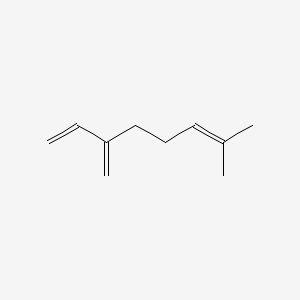| Authors | Title | Published | Journal | PubMed Link |
|---|---|---|---|---|
| Singh V et al. | Direct analysis in real time by mass spectrometric technique for determining the variation in metabolite profiles of Cinnamomum tamala Nees and Eberm genotypes. | 2012 | ScientificWorldJournal | pmid:22701361 |
| Byers JA and Wood DL | Antibiotic-induced inhibition of pheromone synthesis in a bark beetle. | 1981 | Science | pmid:17834584 |
| Terry I et al. | Odor-mediated push-pull pollination in cycads. | 2007 | Science | pmid:17916726 |
| Wood DL et al. | Western pine beetle: specificity among enantiomers of male and female components of an attractant pheromone. | 1976 | Science | pmid:1273574 |
| Tschiggerl C and Bucar F | Investigation of the volatile fraction of rosemary infusion extracts. | 2010 Jul-Sep | Sci Pharm | pmid:21179360 |
| Aiemsaard J et al. | The effect of lemongrass oil and its major components on clinical isolate mastitis pathogens and their mechanisms of action on Staphylococcus aureus DMST 4745. | 2011 | Res. Vet. Sci. | pmid:21316719 |
| Santos PM and Sá-Correia I | Adaptation to beta-myrcene catabolism in Pseudomonas sp. M1: an expression proteomics analysis. | 2009 | Proteomics | pmid:19798672 |
| Stökl J et al. | Smells like aphids: orchid flowers mimic aphid alarm pheromones to attract hoverflies for pollination. | 2011 | Proc. Biol. Sci. | pmid:20943694 |
| Yin J et al. | Functional analysis of general odorant binding protein 2 from the meadow moth, Loxostege sticticalis L. (Lepidoptera: Pyralidae). | 2012 | PLoS ONE | pmid:22479417 |
| Atsbaha Zebelo S et al. | Chrysolina herbacea modulates terpenoid biosynthesis of Mentha aquatica L. | 2011 | PLoS ONE | pmid:21408066 |
Myrcene
Myrcene is a lipid of Prenol Lipids (PR) class. Myrcene is associated with abnormalities such as Hypomenorrhea, abnormal fragmented structure, Nephrosis, Renal tubular disorder and Kidney Diseases. The involved functions are known as Anabolism, Gene Expression, Protein Biosynthesis, Mutation and Selection, Genetic. Myrcene often locates in Plastids, Proboscis, Body tissue, Clone and soluble. The associated genes with Myrcene are TTPA gene, monoterpene synthase, Genome, 4S-limonene synthase and Homologous Gene. The related lipids are Pinene, Octanols, Membrane Lipids and Fatty Acids, Unsaturated.
Cross Reference
Introduction
To understand associated biological information of Myrcene, we collected biological information of abnormalities, associated pathways, cellular/molecular locations, biological functions, related genes/proteins, lipids and common seen animal/experimental models with organized paragraphs from literatures.
What diseases are associated with Myrcene?
Myrcene is suspected in Nephrosis, Kidney Diseases, Dehydration, Hypomenorrhea, Renal tubular disorder and other diseases in descending order of the highest number of associated sentences.
Related references are mostly published in these journals:
| Disease | Cross reference | Weighted score | Related literature |
|---|
No disease MeSH terms mapped to the current reference collection.
PubChem Associated disorders and diseases
What pathways are associated with Myrcene
There are no associated biomedical information in the current reference collection.
PubChem Biomolecular Interactions and Pathways
Link to PubChem Biomolecular Interactions and PathwaysWhat cellular locations are associated with Myrcene?
Visualization in cellular structure
Associated locations are in red color. Not associated locations are in black.
Related references are published most in these journals:
| Location | Cross reference | Weighted score | Related literatures |
|---|
What functions are associated with Myrcene?
Related references are published most in these journals:
| Function | Cross reference | Weighted score | Related literatures |
|---|
What lipids are associated with Myrcene?
Related references are published most in these journals:
| Lipid concept | Cross reference | Weighted score | Related literatures |
|---|
What genes are associated with Myrcene?
Related references are published most in these journals:
| Gene | Cross reference | Weighted score | Related literatures |
|---|
What common seen animal models are associated with Myrcene?
There are no associated biomedical information in the current reference collection.
